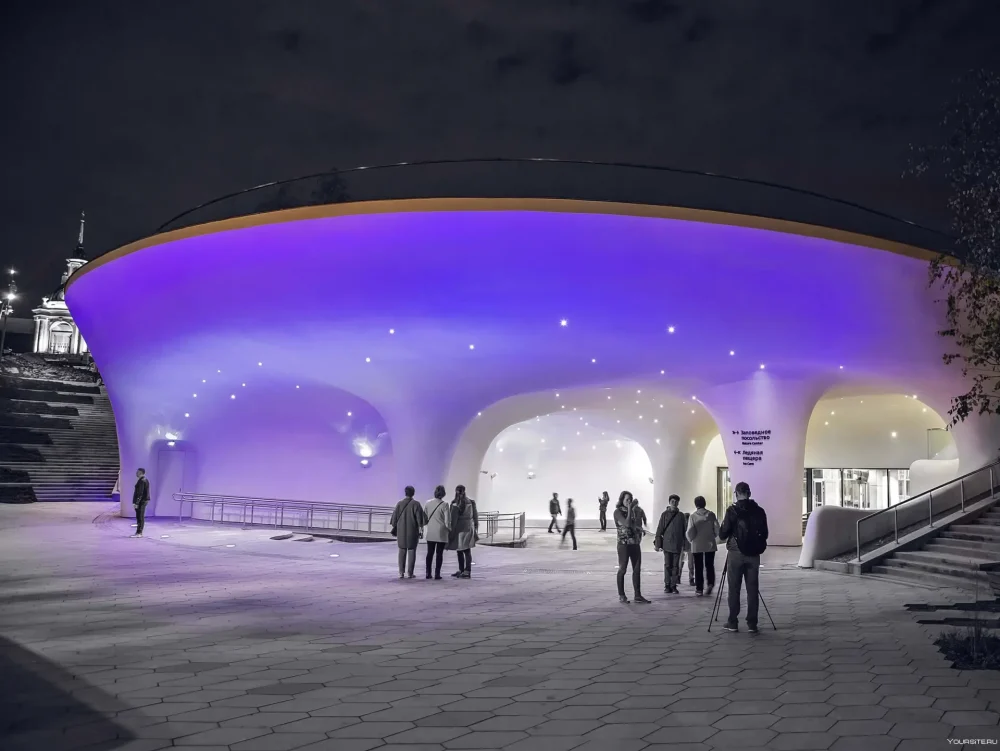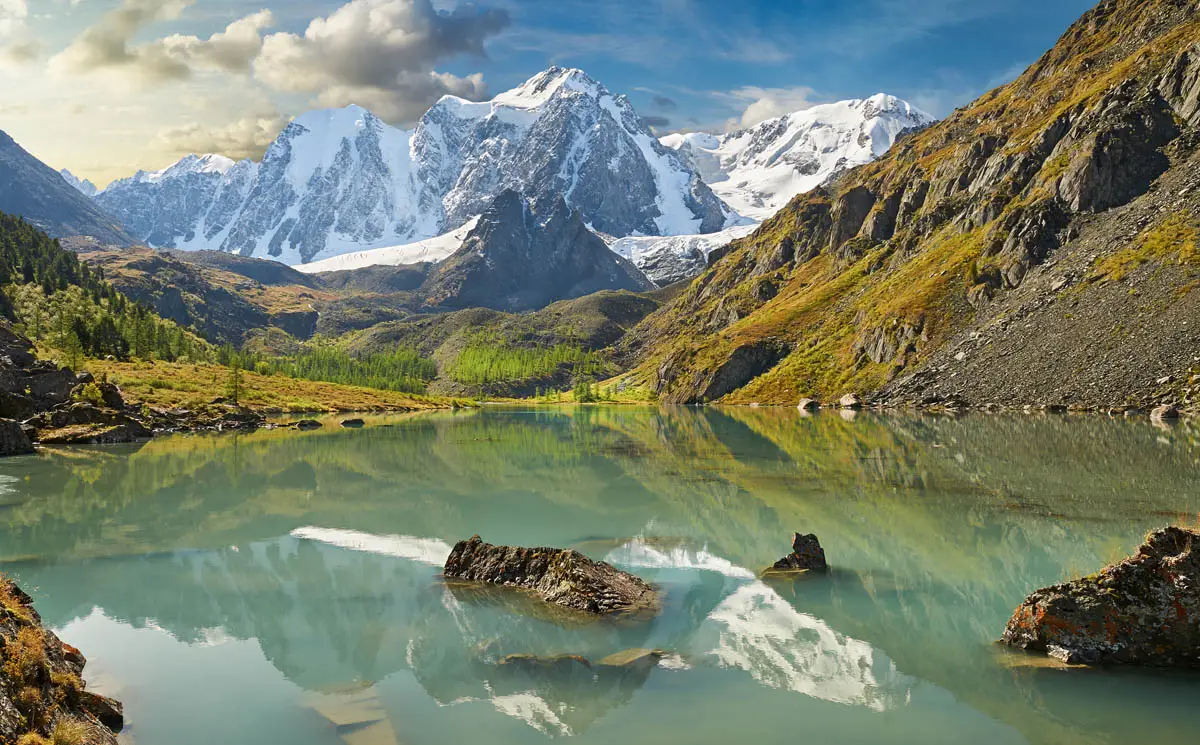Summer in Karelia is more than just a list of attractions. It’s a time for real discoveries in one of the most picturesque regions of Russia. Here you will find unadorned nature, history that comes alive not in museum showcases, but right under the open sky, and routes leading to authentic experiences.
It is during the summer period that you can truly feel the power of the lakes, hear the noise of waterfalls, breathe in the scent of forests, and touch the breath of centuries captured in ancient wooden architecture and mysterious petroglyphs. In this article, we will tell you more about what to see in Karelia in the summer.
Region Features
What to see in Karelia in the summer? It is worth starting with an understanding of the landscape. This is a territory of thousands of lakes and millions of shades of green. 60% of the region is covered by forests, almost 26% is water. The complex geography has not only given incredible nature but also unique routes for tourism.
In June, the temperature rises to +18 °C, in July to +22 °C, and August offers a comfortable +17 °C. The weather in Karelia in the summer is changeable: the morning can start with morning silence, and by evening, mist may already hang over the lakes. The white nights from late May to mid-July make time an illusion—the sun does not set even below the horizon, and mosquitoes and midges come as if on schedule.
Petrozavodsk – the city where lakes live
What to see in Karelia in the summer without visiting Petrozavodsk? You will see many incredible locations, but we still recommend a visit to the city. It stretches along Lake Onega. In the warm season, urban attractions are concentrated here: a promenade with art installations, sculptural alleys, the Museum of Fine Arts with a collection of northern icons from the 15th century, and architectural structures from the time of Peter the Great.
From here, routes to Kizhi start—an open-air museum island with masterpieces of wooden architecture. The attractions of Karelia in the summer not only please the eye but also speak the language of history. The Transfiguration Church of 1714, assembled without a single nail, still remains on the UNESCO World Heritage List.
What to see in Karelia in the summer? Of course, waterfalls!
Waterfalls are a must-see in Karelia in the summer. Kivach is the most famous and accessible. Height – 11 meters, power – like a diesel turbine. It is located in the reserve of the same name, where the fauna of the northern taiga is collected: brown bears, lynxes, moose, rare birds. Nature here dictates the rhythm, not the tourist.
Further south are the Girvas and Por-Porog waterfalls. The first is a remnant of an ancient volcano, the second is attributed a force that changes moods. According to statistics, 70% of tourists return to these places repeatedly.
Traditions in wood: Karelian architecture
Architecture that preserves the rhythm of the axe. In the village of Vodlozero, there is a 17th-century chapel where the voice of the tree can still be heard. In Pudozh, there are houses made of pine with traditional casings, each line of which symbolizes a talisman. Architecture here is like a tuning fork of cultural memory.
The village of Kinerma, officially recognized as one of the most beautiful in Russia, offers immersion in the past: windmills, covered wells, houses made of centuries-old timber. Visitors compare the atmosphere to a museum but without glass between the exhibits.
Active leisure
What to see in Karelia in the summer if you want activity? Rafting on the Shuya River is a classic: speed, splashes, rocky gates. The length is 200 km, routes vary in difficulty. A hike to the Ruskeala Canyon combines active leisure and immersion in the history of Finnish mining. Marble was mined here and used in the construction of St. Isaac’s Cathedral.
Today, the Marble Canyon is the main attraction of tourism. Organizers offer rafting, underground excursions, Tarzan jumps, and walks on the water surface on SUP boards. All this is accompanied by the eternal echo of the rocks.
Entertainment in the lap of nature: berries, mushrooms, and animals
In the list of “what to see in Karelia in the summer,” not only monuments and lakes are included but also what grows underfoot. July is the season of blueberries and bilberries, August is the season of cloudberries and mushrooms. Each type has its own forest. Gathering here is almost like meditation: no rush, no noise, only the shade of trees and the crunch of moss.
The fauna does not lag behind. In the Ladoga Skerries area, you can meet the ringed seal—a rare representative of pinnipeds listed in the Red Book. In the forests, there are moose, brown bears, and martens. Wild animals do not pose for photos, but they leave lasting impressions.
History and archaeology in the open air
What to see in Karelia in the summer if you are interested in history and science? The archaeology of the region has preserved material for millennia ahead. The petroglyphs of White Sea Karelia are direct evidence of life in the Neolithic era. Rock paintings about 5000 years old have recorded scenes of hunting, boats, and shamanic rituals. They are located in the area of the Vyg River and can be reached via a route from Belomorsk.
The “Ancient Karelia” site in the Medvezhyegorsk district is a complex that includes reconstructions of traditional buildings and an open-air museum. Local guides show how the Karelians and Saami lived, what technologies they used in woodworking and stone processing. Archaeology here does not gather dust on shelves—it breathes with the wind and moss.
Historical sites attract not only tourists but also specialists. The program for studying the Ust-Navolok settlement showed that the territories here were settled long before the formation of ancient Russian principalities. These data increased the interest in the region among archaeologists from Finland, Estonia, and France.
Contrasts of climate and nature
What to see in Karelia in the summer if you are attracted to natural anomalies? The climate of the region is unique: it combines the northern tundra, temperate taiga, and Atlantic influence. In June, night frosts are possible in the Segezha and Loukhi areas, and in July, the air in the Ladoga Skerries warms up to +26 °C.
The Karelian forests form a real belt of life. Coniferous arrays with deciduous layers predominate in the south, while spruce-pine thickets cover the north. Biologists note the rare combination of species: in one area, lilies of the valley, birch mushrooms, and northern mosses can grow together.
The lakes here are not just bodies of water. Each of them is a separate system. Lake Ladoga is the largest in Europe, with an area of 18,135 km². Lake Onega is the second largest but the cleanest. Its depth reaches 127 m, the water contains minimal organics, making it almost drinkable. Anglers value them for populations of trout, whitefish, and grayling.
Top 7 Locations for a Must-Visit: What to See in Karelia in the Summer
These places reveal the soul of the region in every landscape, sound, and detail.
7 locations revealing the character of the region:
- Kizhi – museum of wooden architecture, Transfiguration Church, age – 300 years.
- Kivach Waterfall – 11 meters high, adjacent to a dendrological garden and ecological trails.
- Ruskeala Mountain Park – a canyon with marble walls, an underground lake, night lighting.
- Petrozavodsk embankment – sculptures made of metal, granite, glass, panoramic view of Lake Onega.
- Solovki – monastery complex, archipelago on the brink of the White Sea and history.
- Lake Syamozero – ancient glacial formation, popular among fishermen and ethnographers.
- Paanajarvi National Park – canyons, rocks, lakes, and the deepest reservoir – Paanajarvi (128 m).
Each of these directions forms a voluminous cultural and natural portrait of the region without embellishments and tourist filters. It is here that Karelia demonstrates not a facade but an authentic essence – rich, vibrant, and multifaceted.
Now you know what to see in Karelia in the summer
What to see in Karelia in the summer to make the trip memorable? Everything that lives beyond souvenirs: the rustle of pines, the expanses of lakes, ancient petroglyphs, and summer festivals under the open sky. July and August are the time when berries, silence, and culture merge into one. Karelia calls not to checkmarks but to real immersion.
 en
en  ar
ar  de
de  es
es  fr
fr  nl
nl  hi
hi  ru
ru  it
it  pt
pt  el
el 










